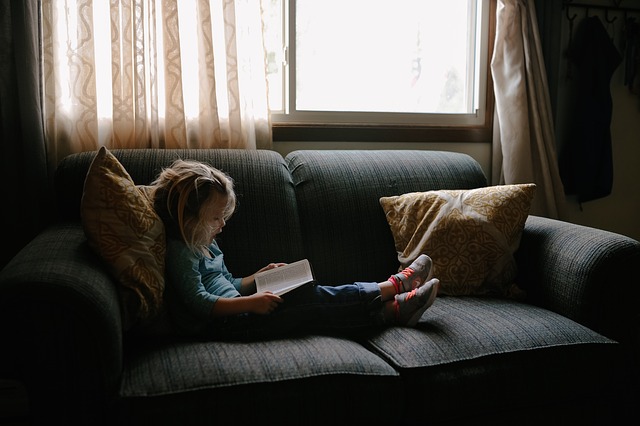
We all know the saying, ‘a picture speaks a thousand words’, and it was just recently when I found this to be true once again. This was when I was confronted with the question for myself ‘What Bible do I buy a very young child?’.
This question in and of itself is not new to me. When I was a children and families minister, families used to ask me this question all the time. There is always some particular things I tell them to look out for, they were always thankful, but it was only when I had to look for myself that I realised how truly overwhelming the task it.
Whatever bookstore you go to, whether it specializes in Christian material or not, you get to where the children’s Bible section is, and there are literally hundreds of different ones to choose from! All this for a 1 or 2-year-old?! Don’t get me wrong I do love the choice. But when I start to look at what was on offer within that choice, I was truly surprised.
There are a number of things I would like to help you, when you get to this situation so you don’t have to go through the burden that I did.
1. Know that pictures are just as important as words.
2. Notice what each of the children’s Bibles has in, and what it leaves out.
3. Check the words themselves for ‘interesting’ paraphrasing.
So first, pictures! Here is where the saying comes in. Pictures speak a thousand words. Children get their first impressions of Bibles from the pictures that they see. Sometimes pictures can be taken for granted. When you look at the pictures as they are depicted, what are they saying or conveying about the story. What does the art style say about the story or the passage you are reading about? Do they all look happy, are they racially diverse or one in particular. I had a mentor once say to me ‘Can you tell the story by looking at the pictures?’. By this he meant, if you only had the pictures to tell the story, and removed all the words, would the story change?
A classic example to judge children’s Bibles by is ‘how white is Jesus’. Take time to look over the pictures carefully next time you are looking for picture Bibles for children.
The second thing to keep in mind when looking for children’s Bibles, is notice what stories they put in there, and which part of the stories they put in there. You will always find many stories about Noah & Jonah. This are key stories in the story of the Bible, but be aware how they tell the story. Motivations are rarely expressed, there tends to be no context of any kind, or even saying that these are part of God’s big story of salvation. You may think ‘they are children’s books, how much information should we be throwing at them at such a young age’. Removing a story from the Bible, removes its meaning. Simply telling a nice story about Noah, can leave children thinking it is simply a nice story, like where is the green sheep, or one of the Spot books. We believe that these stories are God’s word, and need to be treated as such. Make sure you look at how the story is introduced, and what they say at the end of the story.
Finally, read as much of the book as you can. Many of the short children’s Bibles omit many things, and rephrase things in ways that children can understand. I equally applaud this and treat it with caution in the same breath. Make sure you are aware of the way the writer has changed the words. Consider if they are over simplified, or haven’t said enough. Consider the way they have decided to write the sentences or if you are ok with them being put in poem form. If you are able, find a Bible (or Bible app) and check what the modern translations say, compared to that of the children’s Bible you are looking at.
There three steps will help inform your decision next time you read the Bible. There are great Bibles out there, and I am more of a fan of the larger more complete children’s Bibles, rather than the ones that have very limited range of stories with them. Consider the Beginners Bible for young children. It has a close to full Bible for the age group. Simple pictures, simple sentences. I’m not a fan of all the pictures, but for the most part, its on point. Next for children in the lower half of primary school, consider the Big Picture storybook Bible. This tries to consider the consistent promises God made to his people, and track them across the whole story of the Bible. Great pictures, not many words per page. The last is the Jesus story book Bible. This can be read to all of primary age children, but I would recommend upper primary, even for them to read by themselves. Its central theme is that all of the Bible is pointing to Jesus, everything is looking towards his coming. Its beautifully written, with a poetic tone. There are many many words on pages, often written in creative ways. Early readers will struggle, but do enjoy hearing the words. The pictures are in an unusual but very much pleasing style.
There are many others to choose from, these are simply my favourites.
May God’s word speak into the children’s heart, so that they may come to know him more and more. Amen.

Stephen Urmston is a full time puppeteer and performer that shares the good news of Jesus all over Australia. He has 18 years of experience in children’s ministry and has been a children’s and families minister in South Australia, Victoria and Queensland. Stephen loves Jesus, and loves being creative, and especially loves when his two loves combine, turning into some kind of super powered passion!
Stephen Urmston previous articles may be viewed
http://www.pressserviceinternational.org/stephen-urmston.html

Stephen Urmston is a full time puppeteer and performer that shares the good news of Jesus all over Australia. He has 18 years of experience in children’s ministry and has been a children’s and families minister in South Australia, Victoria and Queensland. Stephen loves Jesus, and loves being creative, and especially loves when his two loves combine, turning into some kind of super powered passion!
Sarah Urmston previous articles may be viewedhttp://www.pressserviceinternational.org/stephen-urmston.html